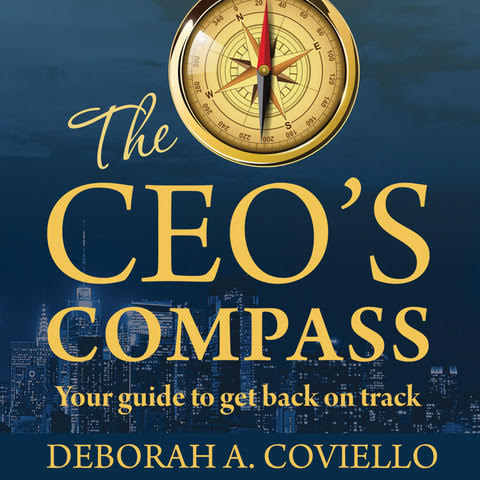Have you ever changed your personal leadership style to what was expected to only realize it was not you that needed to change, but the community in which you serve?
I once was advised to consider changing my “presence” and when I did, while it was interesting to some, it was not favored by others. That left me wondering if I was wrong in my approach, which impacted my confidence. Then I noticed a few people in my community started to gravitate towards the changes in my leadership style to which I realized I needed to change both in order to thrive as a leader.
This is a challenge for a leader to make this realization as we’re programmed to press forward in our environment to make things work. However, the highly aware leader will take the time for self reflection to understand who they are as a leader, why they lead and how they will lead perhaps differently to get a different outcome. No amount of leadership books, courses or podcasts are going to enable you to be more effective until you realize what your leadership style is and only then can you move forward. I discuss this in the first chapter of my book The CEO’s Compass, impressing that every leader must pause first (I know slowing down is hard for us!), but it’s a necessary first step to understand the changes you need to make personally and then in how you serve others.
Realize who you serve is not you or the organization, but those in your care.
Once I realized why I lead and how I was going to lead differently, I had to step out of my comfort zone to try new things. This takes a lot of courage because you won’t be at the top of your game anymore when it comes to perfection & efficiency; you’re going to stumble, but ultimately find out what works. I realized my meetings were too efficient and left no time to check in with my team on how they felt and what were their challenges. As soon as I started with What is working well and also what is not working, I started making stronger human connections and realized how I could serve my team to achieve results vs. driving results; a significant change in leadership style.
The meaning of presence; the great aha moment.
Remember earlier a colleague shared I needed to have more presence, but offered little guidance to what that meant. At first I thought it was to get a new wardrobe and I was better groomed with my hair & makeup. They shared with me that it was about having key talking points each time I showed up, but there was no mentorship offered to evolve that skill. It was only later when I sought the input of an image consultant that presence was a complete package that started with consistency & quality of messaging. Oh, I wish I had found this person earlier in my career and who knows how it could have impacted my impact!
It goes back to spending time with yourself as a leader and curating all the values & grounding talking points to which you deeply believe in and are the reasons you do what you do. Only then, (and by the way this is personal branding at the core) do you start evolving the external expression of these core values in how you communicate and connect with others. Once that messaging is honed in, you make minor changes in how you dress and groom that matches the messaging you wish to make with your community.
Once I started showing up with a consistent set of values, talking points and my physical presence matching, people started to listen more and gravitate to my work and leadership. This advice was gold to me and if you’d like to know more about how to apply this to your situation, please reach out! I’d love to spread the wealth!
In the end, its more than what you do as a leader, but leaving a lasting impact
Up until now, I’ve shared with you simple changes in leadership style (aka brand) that move you from serving the business results to one that is creating connection with your community. That is incredibly important to ground you in the here and now.What leaders don’t often realize is the future impact of their work through these micro changes and how your work will far outlast the time you spent in the present.
Leaders need to express their thought leadership beyond the confines of the organization. When leaders only support the company brand, there is a missed opportunity to the existing community connected ecosystem. This is greater than visiting with customers or speaking at town halls or shareholder meetings. Once those forums no longer exist, so does the legacy of your leadership. When leaders who have come into their own and realize their thought leadership is far reaching beyond the boardroom, they serve an ever greater community and their legacy is more likely to be impactful.
Take 5% of your time to write an article. Speak at an industry event. Start being a podcast guest and engage in community service events. Increase the number of people you can impact.
The investment is clear; people want to align with people that align with their values. Investing in the community creates trust and then people want to be apart of you and the company you lead. By having the courage to share your thoughts with a greater community, you are destined to leave an impact for generations to come.
Now I want you to pause and reflect on what I have shared. Do you work only to get a result? Or, do you work to leave a lasting impact? The answer is in you to take the time to develop your personal leadership brand. Once you have done that, you will find amazing strength and confidence in how you show up. That renewed energy then draws you into a new level of performance of being in service to others and inspiring others to do their best work. Now ask yourself if this is how you want to be remembered?
If this makes sense, but you’d like to learn more about applying these principles to your situation, you can email me, direct message me on linkedin or simply grab a few minutes on my calendar.
I find through casual conversation leveraging The CEOs Compass often has all the answers for you to get back on track.
The CEO’s Compass: Your Guide to Get Back on Track – If you’re that leader who feels in their gut something is off track, this could be the resource for you.

Resources
Good Reads
Due to the Thanksgiving holiday in the US, I spent more time with my family and did not have time to read. Did you recently read something you’d like to share with others? Let me know what was a good read and why and we’ll highlight it next week in our newsletter.
Good Music
Florence by Kevin Penkin Did I ever mention to you I have a habit of procrastination? Or maybe it’s inspiration comes to me only when I take the time to listen to music such as this piece called Florence. It’s uplifting and playful and motivates me into a creative space. The entire album by Kevin is a great for inspiration. Let me know what you think!
Good Advice
“Everybody has the skills to be successful at what they need to do to get the final outcome. It’s all about building that capability from the C-suite down.”
–Mitchell Levy
















